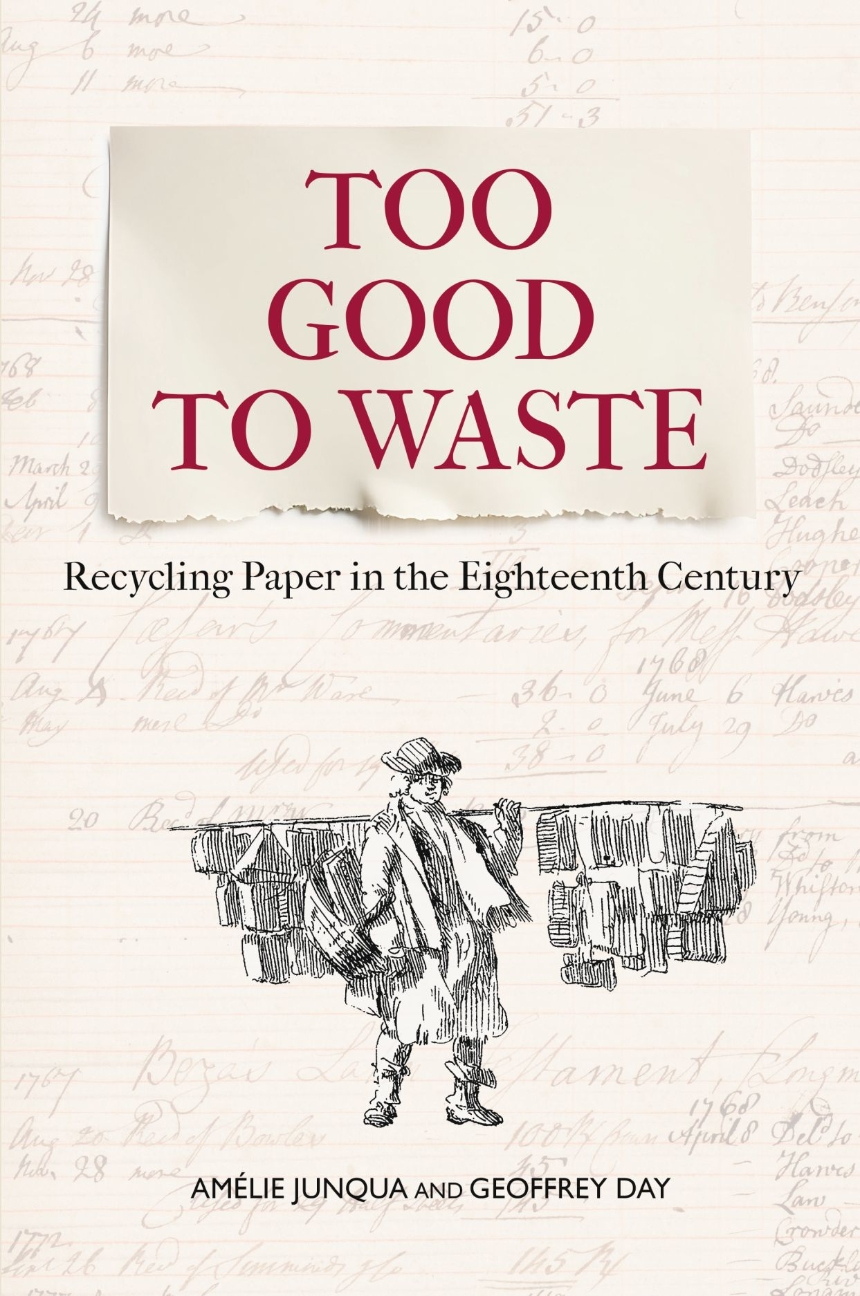Distributed for Bodleian Library Publishing
Too Good to Waste
Recycling Paper in the Eighteenth Century
The incredible history of paper recycling in eighteenth-century England.
Paper was a precious commodity in the eighteenth century, with every sheet being made by hand. There was, therefore, a significant demand for recycling substandard paper from mills as well as discarded proofs and sheets from printers and booksellers for secondary use, alongside a robust black market of stealing and receiving stolen paper. A single piece of paper could be termed “waste” and yet sold for cash three times in succession, on each occasion performing a useful function. The end user would keep the newly purchased “waste” in a special drawer from which it would be taken for a myriad household purposes, including cooking, needlework, decoration, and hygiene. Popular satirical prints depicted explicit paper uses, while creators of flamboyant papier mâché ceilings concealed the material by gilding it.
With over one hundred illustrations—and drawing on letters from a range of people from farmers to notable authors and members of the aristocracy—together with meticulous archival research, Too Good to Waste traces the extraordinary history of ingenious paper recycling in eighteenth-century England.
480 pages | 31 color plates, 59 halftones | 6.14 x 9.21 | © 2026
History: British and Irish History, Environmental History, European History
Table of Contents
In the Printing House
Jobbing Printing
Bookselling
Newspapers & Periodicals
The Preservation of Printed Waste
Waste Paper: The Black Market
Men of Paper, Women of Waste
The ‘Vile Uses’ of Printed Waste
Reading Papier-mâché Ceilings
Visions of Waste
Afterword
Appendix A Hannah Glasse’s Hasty Dish
Appendix B Domestic Waste Paper

